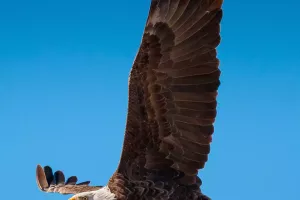In Japan, the crane, or tsuru, is a national treasure and is considered the bird of happiness. It is depicted in art, literature, and mythology as a symbol of good luck and longevity because it is said to live 1,000 years. An ancient Japanese legend promises that when you fold a thousand origami cranes, you will be granted a wish by the sacred crane.
In more recent years, the crane has become a symbol of peace, hope, and healing during challenging times. It is said that a girl named Sadako Sasaki was diagnosed with leukemia at age 12, she became determined to fold 1,000 cranes in hopes of recovery, happiness, and a world of eternal peace. Although she was able to fold only 644 cranes before she died, her classmates folded the remaining 356 in her honor – the ultimate testimony to loyalty and hope for a better future.
To Japanese people there is no other bird gentler or more romantic than the Red-Crowned Cranes. These gentle giants, also known as the snow ballerinas, show so much grace while performing their courtship dance. Once they have created their union as partners, they bond with those mates throughout their entire lifetime thereafter. Because this bird is monogamous, they represent loyalty a long and fruitful life and bring good fortune.
The Red-Crowned Crane, Tancho in Japanese, stands at 150 to 158 cm (4ft to 5 ft) tall weighing 8 to 11 kg (17 to 25) pounds with an amazingly large wingspan measuring 200 to 260 cm (6.5 ft to 8.5 ft) and live more than 60 years. The red-crowned crane has snow-white primary feathers with a black face and neck. White feathers extend from behind the eyes to the nape, and a red patch tops the crane's head, giving it its name. The majority of the body is pure white with the exception of black secondary and tertiary feathers. The red-crowned crane has a deep green bill and a long, sharply angular beak for spearing its prey. Both males and females are the same color, and males tend to be slightly larger.
The Red-Crowned Cranes ritual courtship dance is a masterpiece of impassioned choreography; they bow to one another, then raise their heads towards the sky and call-in unison, and as they call, they begin to dance. One pair or the entire flock will leap into the air, at the same time commencing the mating ritual ballet/dance.
The First Nations peoples of Japan, The Ainu are brilliant storytellers, and they tell the story of a variety of animals and spiritual or divine beings who are composed of or possess spiritual energy. At Ainu powwows in Hokkaido, similar to North Americans First Nations Peoples, the Ainu tell the story of one such entity, The Red-Crowned Crane, with human dancers, in which the live birds are considered to be the Kamuy (a diving being) Gods of the Marshes, and spirit dancers. At Hokkaido powwows, the mystical healing energies of the Kamuy (Gods) of the Cranes are nearly tangible as the dancers perform the sacred Ainu dances and pay tribute to other mystical beings.


